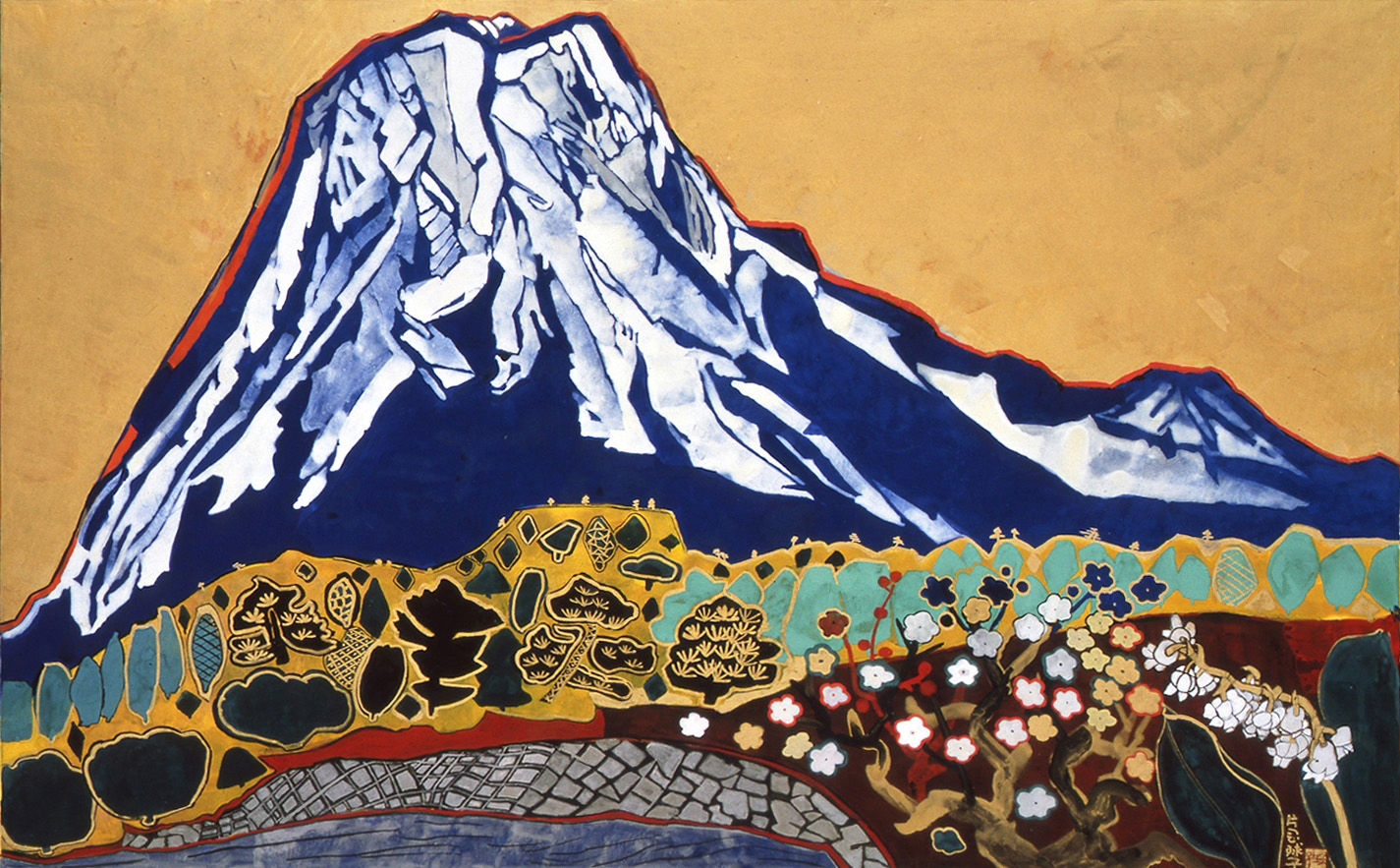It's often said by Japanese painters that the most difficult subject of all is Mount Fuji. How is it possible to come up with an original take on a theme that has been painted so often and by so many talented artists? Yet for all their angst, artists clearly manage, as demonstrated by the sheer variety of beautiful images of Mount Fuji currently on display at the Yamatane Museum of Art.
Organized to commemorate the mountain's designation in 2013 as a UNESCO World Cultural Heritage Site, "Mt. Fuji, Cherry Blossoms, and Flowers in Spring" opens with some three dozen images of the sacred mountain representing several centuries of Japanese art. The second half of the space is given over to works depicting cherry blossoms, peonies and other spring flowers, reviving an earlier Yamatane tradition of staging a flower-themed exhibition every spring.
Mount Fuji, an active volcano and the tallest peak in Japan, has been regarded through history as sacred and is ringed by temples and shrines devoted to its worship. Its power and beauty have inspired centuries of literature and art. Early paintings show the mountain with three even peaks, a stylized depiction that may have been influenced by esoteric beliefs about the power of the number three. By the Edo Period (1603-1867), when travel became less restricted and more people had the opportunity to actually see the mountain, depictions in art became more realistic.

















With your current subscription plan you can comment on stories. However, before writing your first comment, please create a display name in the Profile section of your subscriber account page.